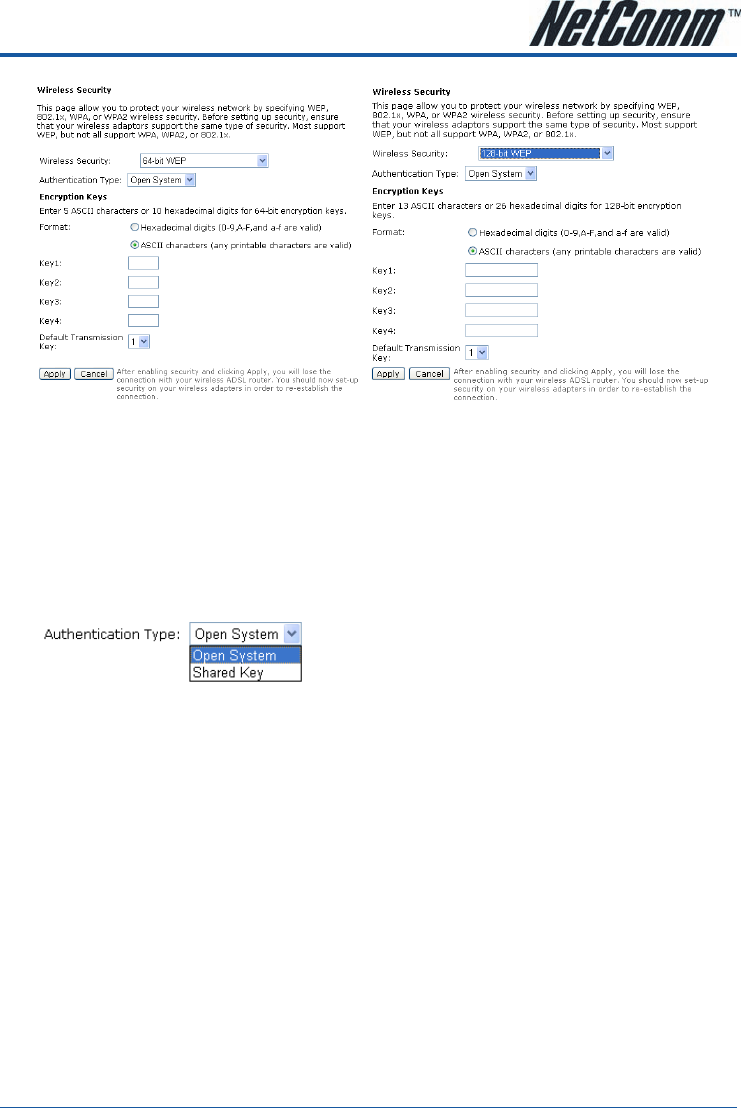
YML854 Rev1 NB6, NB6W, NB6Plus4, NB6Plus4W, NB6Plus4WnNB6, NB6W, NB6Plus4, NB6Plus4W, NB6Plus4Wn User Guide
www.netcomm.com.au 109
For 64-bit WEP/128-bit WEP
Wireless Security:
By default a minimum level of wireless security has been enabled to help prevent against unwanted
wireless users accessing the unit. The default level of wireless security that has been enabled is
known as 64 bit Wired Equivalent Privacy or WEP for short. The default 64 bit Hexadecimal WEP
key is: a1b2c3d4e5
Select the WEP mode for the security function; there are two options, 64-bit and 128-bit. Before
being transmitted, the data will be encrypted using the encryption key. For example, if you set 64-bit
in this field, then the receiving station must be set to use 64 Bit Encryption, and have the same Key
value at the same time; otherwise, it will not be able to decrypt the data.
Authentication Type:
The ADSL Router supports two authentication types: Open System and Shared key. This should be
considered with the WEP (Wired Equivalent Privacy) mechanism.
Open System means that it allows any client to authenticate and attempt to communicate with a
bridge. The client can only communicate if its WEP keys match the router’s WEP keys.
Shared Key means that a bridge or router will send an unencrypted text string to any client
attempting to communicate with the router. The client requesting authentication encrypts the text and
sends back to the router. Both unencrypted and encrypted can be monitored, yet it leaves the bridge
open to be attacked by any intruder if he calculates the WEP key by comparing the text strings. That
is why shared key authentication can be less secure than open authentication.


















